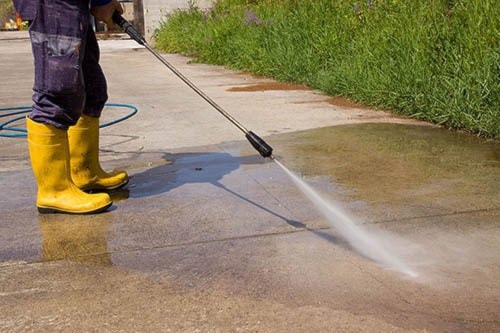By Kevin Gillies
It seems like winter never really hit the Lower Mainland this year, with all the record-breaking warm temperatures. Yet spring is quickly approaching, and that means preparing your home for a new season.
From spring cleaning to spring maintenance, the busy season is almost upon us.
Planning your spring home chores list is a good way to ensure this spring is a productive one around the house and helps you save money on energy bills this summer, improve your home’s appearance and head off big-ticket repairs down the road.
A few tips to help you prepare your home for the warmer months:
• Inspecting the air conditioner – for about $75-200, a technician will tune up your cooling system to manufacturer-rated efficiency and you won’t sweat the first hot weekend with an air conditioner that’s out of commission.
Dirty filters make air conditioners work harder, increasing energy costs and possibly damaging equipment.
Check them monthly and replace as needed, or at least every three months.
Technicians will check drains during a tune-up, as well.
• Putting temperature on autopilot – a programmable thermostat can save about $180 annually on cooling and heating bills, if you can live with higher indoor temperatures in summer and cooler temperatures in winter.
In summer, you can make those settings more tolerable if you install ceiling fans.
Just remember that a ceiling fan cools people, not a room, so turn it off when you leave the room.
• Caulking the cracks – if gaps around doors or windows are wider than a nickel, you’ll need to reapply exterior caulking. Check window-glazing putty, too, which seals glass into window frames.
Add weather stripping around doors, making sure that no daylight is visible from the inside. You’ll save money on air conditioning and you won’t have to repeat this job in the fall.
• Cleaning gutters – decomposed leaves, twigs, and spring petals and seeds may be worse in spring than in the fall.
Gutter cleaning generally costs $90-225 for a 2,000-square-foot home with about 180 linear feet of gutter.
Extend downspouts to carry water three to four feet away from your home’s foundation, using four-inch corrugated plastic pipe.
• Repairing roof – inspect your roof for damaged, loose or missing shingles. You can use a pair of binoculars if that is safer.
If needed, hire a handyman to repair shingles but if damage is more extensive, you’ll need a roofer.
You’ll also want to check and repair breaks in flashing seals around vent stacks and chimneys.
Clean out any roof drains or openings in the wall that allow water to drain.
• Pressure washing – spring-clean your home’s exterior to remove accumulated dirt, mold and stains from siding, deck, sidewalks, driveway and garage floor, fences, and lawn furniture.
A rented pressure washer can set you back $40-75 a day for such a task.
• Washing windows – it’s only when windows are clean and the spring sun shines in that you’ll realize just how dirty the windows were.
Before washing the glass, clean out the sills and window tracks with a soft brush or vacuum attachment.
Pour a small amount of water into the sill to ensure that weep holes, which drain rainwater to the exterior, aren’t clogged up.
And don’t forget window screens too as they accumulate dust and other pollutants.
• Repairing sidewalks and driveways – fix any breakdowns in concrete or asphalt before it worsens. You can patch or fill surface cracks, chips or flaking in concrete on your own, using cement-repair products available at local home-improvement stores.
For deeper cracks, settling or sunken concrete, call a professional, whether a handyman or a concrete contractor.
Asphalt is harder to work with, so call a pro for that job.
To increase your driveway’s lifespan, have asphalt resealed every two to five years, depending on climate and wear patterns, and have concrete resealed every one to three years. You may be able to do the concrete work yourself.
• Preparing to mow –a dull lawn-mower blade doesn’t slice, but instead tears grass, leaving it vulnerable to disease, sun damage and insects.
A blade typically needs sharpening once or twice a year, or more often depending on how big your yard is and how frequently you mow.
You should also tune up your lawn mower after every 25 hours of use to increase its efficiency and reduce polluting emissions.
Change the spark plugs, oil and oil filter (or clean it).
A pro tune up will cost you upwards of $75, but you can do the job yourself for about $25 for oil and parts.
• Losing lint – even if you clean your clothing dryer’s lint trap before every use, the vent still accumulates lint over time like plaque in arteries.
A clogged vent can reduce the dryer’s efficiency and create a fire hazard.
The Internet and YouTube also provide guidance on these tasks.
Getting ahead of the game now can help make 2015’s spring one of the most enjoyable ever.
Kevin Gillies is a freelance writer for Black Press.
